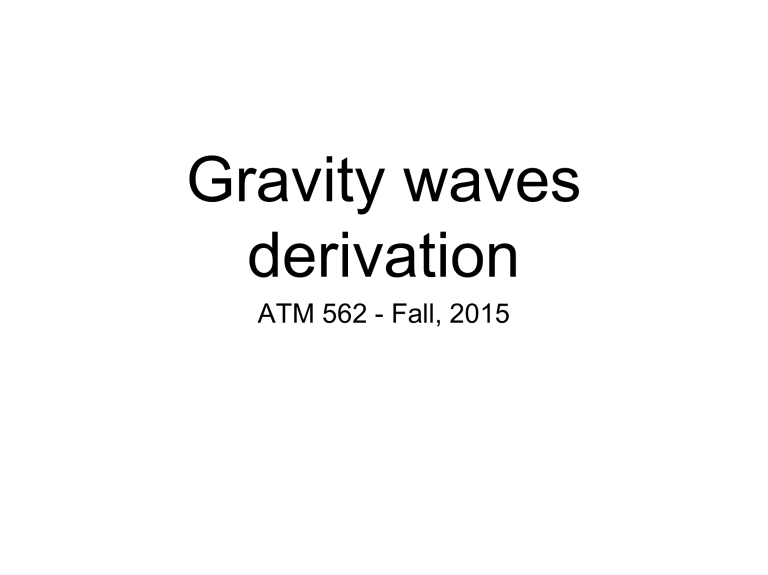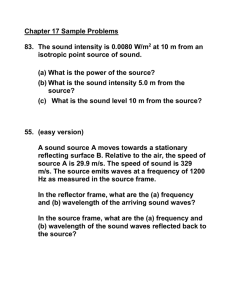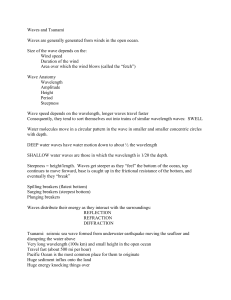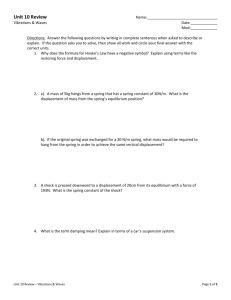Gravity waves derivation

Gravity waves derivation
ATM 562 - Fall, 2015
Introduction
•
Gravity waves describe how environment responds to disturbances, such as by oscillating parcels
•
Goal: derive “dispersion relation” that relates frequency (period) of response to wavelength and stability
•
Simplifications: make atmosphere 2D, calm, dry adiabatic, flat, non-rotating, constant density
Starting equations continuity equation
Expand total derivatives
Perturbation method
Calm, hydrostatic, constant density environment
(“basic state”)
Start w/ potential temperature used log tricks and: for basic state
Apply perturbation method
Base state cancels... makes constants disappear...
Useful approximation for x small: speed of sound
Vertical equation
Do perturbation analysis, neglect products of perturbations
Rearrange, replace density with potential temperature
Full set of linearized equations
Obtaining the frequency equation
#1 differentiate horizontal and vertical equations of motion subtract top equation from bottom
Obtaining the frequency equation
#2
…where we differentiated w/r/t x . Since continuity implies then
Since the potential temperature equation was then
(differentiated twice w/r/t x , rearranged)
Final steps...
differentiate w/r/t t again and plug in expressions from last slide
Pendulum equation.... note only w left
Solving the pendulum equation
•
We expect to find waves -- so we go looking for them!
•
Waves are characterized by period P, horizontal wavelength L x and vertical wavelength L z
•
Relate period and wavelength to frequency and wavenumber
A wave-like solution where...
This is a combination of cosine and sine waves owing to Euler’s relations
Differentiating #1
Differentiating #1 now differentiate again
Differentiating #2 now differentiate twice with respect to time
Do same w/r/t z , and the pieces assemble into a very simple equation
The dispersion equation
A stable environment, disturbed by an oscillating parcel, possesses waves with frequency (period) depending the stability (N) and horizontal & vertical wavelengths (k, m) that can be determined by how the environment is perturbed
Wave phase speed
Example:
Wave horizontal wavelength 20 km vertical wavelength 10 km and stability N = 0.01/s
Wave phase speed
Note as you make the environment more stable waves move faster .
Note that TWO oppositely propagating waves are produced.
Add a mean wind… intrinsic frequency flow-relative phase speed ground-relative phase speed
Wave phase tilt
Wave tilt with height depends on intrinsic forcing frequency and stability
(e.g., smaller ω … smaller cos α
…larger tilt)
[end]









